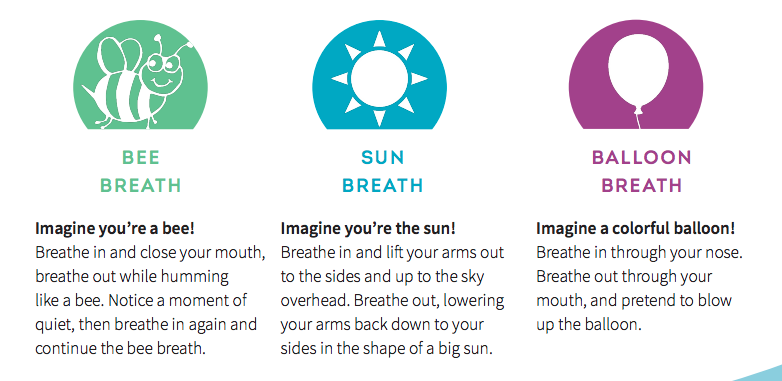3 Practical iRest Meditation Exercises To Help Your Children Navigate Life [+ Free Poster]
Imagine your child, or a child you know, has had a bad day at school. Their best friend was mean to them, a soccer ball landed on their newly sprouting bean stalk, and their teacher told them they had to redo their homework. They’re sad, angry, and irritated.
There are two main ways in which iRest can help you to help your children healthily process and manage their emotions and experiences. The first is a child-centric path, which entails learning and using easy, practical tools with your child.
The second, more integral path, is a parent-centric one because it's about you learning to regulate your nervous system so that your child can co-regulate with you. If you’re unable to do this, the direct path is potentially of little use.
Combining these two approaches empowers you and your child to navigate the ups and downs of life in constructive, connecting, and healthy ways.
The Nervous System 101
The nervous system controls everything that you do, including breathing, moving, thinking, and feeling. It includes the brain, spinal cord, and all the nerves in your body. It allows you to navigate your environment and keeps you safe from harm. It also plays a critical role in your ability to connect to other people. A healthy, flexible nervous system, with high vagal tone, is able to effectively process and regulate emotions.
Emotional regulation is your ability to cope with and process the full spectrum of emotions, and associated stress, in a healthy way. When your nervous system is able to regulate your emotions in the manner it’s designed to, it enables you to be resilient, supports your immune system, and increases your capacity for friendship, connection, and compassion.
Trauma of all kinds, chronic stress, and a lack of co-regulation in your childhood impact your nervous system’s ability to do what it’s built to do. These kinds of experiences contribute to a rigid nervous system that struggles to regulate emotion well and is associated with depression, social anxiety, and low immunity.
The Parent-Centric Path: Attending To Your Nervous System To Support Your Child
Have you ever noticed how when you’re stressed and rushing around, your child becomes unsettled, and when you’re feeling grounded and peaceful, your child is calm? This is because your child’s nervous system attunes itself to yours.
You have the superpower to help your child regulate their emotions through the management of your nervous system, and you have the responsibility of maintaining a flexible and healthy nervous system in order to anchor a sense of wellbeing in your household.
iRest meditation trains and primes your nervous system to down-regulate when it’s been hyper-active and grows your capacity to handle difficult or triggering situations and stress without getting reactive or overwhelmed. It nourishes your ability to respond consciously to, and improves your level of resilience for, managing stress and life’s daily challenges. Take five minutes to listen to the guided meditation. Notice what you experience as you explore bodily sensation.
In the short video below, Senior iRest Trainer, Clearlight Gerald, explains co-regulation between parent and child, and how iRest meditation offers you proactive tools to nourish your ability to stay calm, or return to calm, as needed.
The Child-Centric Path: iRest Tools For Kids
There are specific steps in the 10-part iRest protocol that are particularly beneficial for children. These include Inner Resource, BodySensing, and BreathSensing. Because iRest is somatic, body-based meditation it’s effective for helping children cultivate resilience for meeting difficult experiences and emotions, and learning how to stay with big emotions as sensation in the body.
The first two practices below are abridged excerpts from Clearlight Gerald’s online course: iRest for Parents and Educators: Nourishing Wellbeing. All three practices are offered here as a starting point.
1. Inner Resource: Once you’ve established your own felt-sense of an Inner Resource through your practice of iRest, you’re best able to guide your children in this process.
Use: This exercise fosters an internal, ever present place of safety and strength for your child to call on whenever they’re experiencing a stressful event, big emotions, or are needing to relax.
Exercise: Invite your child to conjure and cultivate an alive and sensory experience of their personal Inner Resource by asking the following questions as a slow, winding exploration.
Can you think of a time when you felt really relaxed and happy? What were you doing?
Can you remember how your body felt as relaxed and happy?
Is there a special place that you either imagine or remember, that when you think of it you feel happy, safe and really good inside? This might be a place in nature, a place you play or a special hiding spot.
Can you describe this place with all of your five senses?
Once established, help them anchor their experience by revisiting their Inner Resource each night before bed and explaining that it’s a special inner space they can call on whenever they feel scared, or down, or upset, or want to relax.
2. BodySensing: This helps your child stay anchored and grounded in their body, sensations, and the present moment, while normalizing and acclimatizing them to whatever they feel, wherever in their body.
Use: Help your child develop a capacity to stay with sensation as it arises in the body rather than become overwhelmed or get lost in the mind’s story.
Exercise: When your child is experiencing an emotion, guide them into a body-based exploration of it with these questions:
Where is the sensation located in your body?
Does the sensation move or is it still?
Does it have a temperature, a color, a texture?
It’s important to understand that you’re not trying to change your child’s experience of sensation but rather help them feel into it and describe it as vividly as possible.
If you’d like a visual aid for helping your child access and describe their emotions as sensation, you can download the Weather As Emotions poster below to print.
Note how not all sunny sensations are happy, or all stormy sensations uncomfortable. This is important because it includes and validates your child’s experience. For example, they may experience anger as bright suns burning in their cheeks and chest.
3. BreathSensing: The breath is a vital tool that can offer support when we’re stressed and struggling, and help us down-regulate to a calmer state.
Use: Regularly practice the three breathing techniques below with your child so that they’re available to you both in times of stress or when you’re wanting to relax. Explain to your child that they can use their favorite breath any time they want to feel relaxed, or brave, or awake.

We wish you endless self-compassion as you navigate the joys and challenges of raising, educating, and caring for children. May these tools support you in doing the best you can and grant you grace for when it’s just one of those days.
Many of the tools and the information provided in this article are sourced from Senior iRest Trainer, Clearlight Gerald’s iRest for Educators and Parents: Nourishing Wellbeing online course. This course focuses on practical tools to help you regulate your nervous system, navigate life’s daily challenges, and build inner resilience so that you’re available as a safe and calming parent, caregiver, or educator to the children in your life. Read the full course details here.






Join the conversation
We would love to hear what you have to say. Log in or Register to post comments.